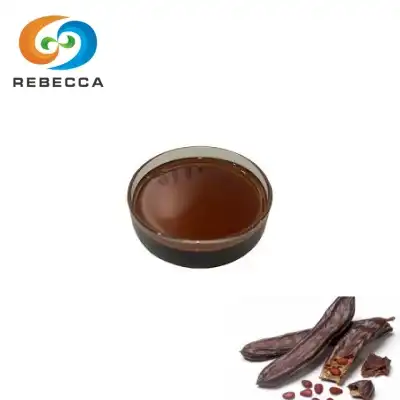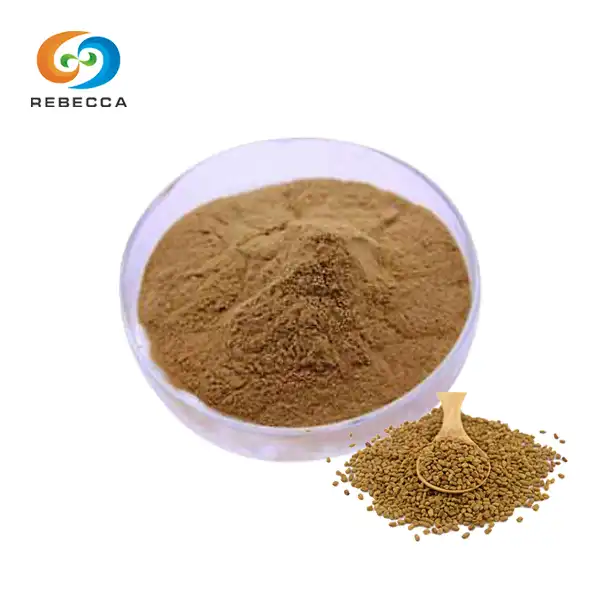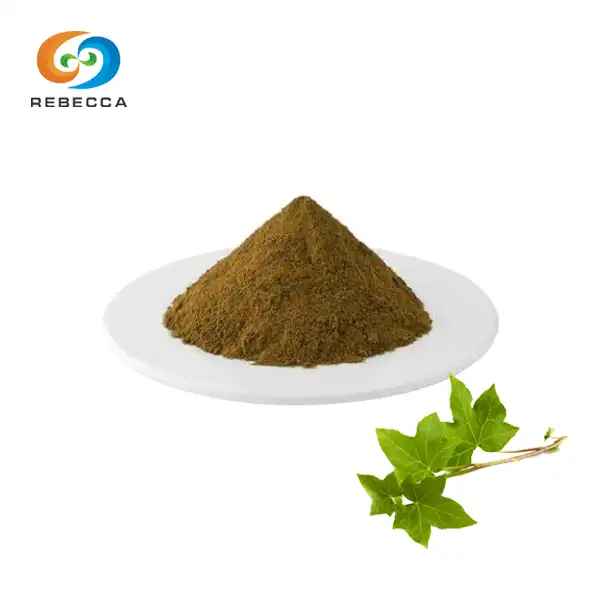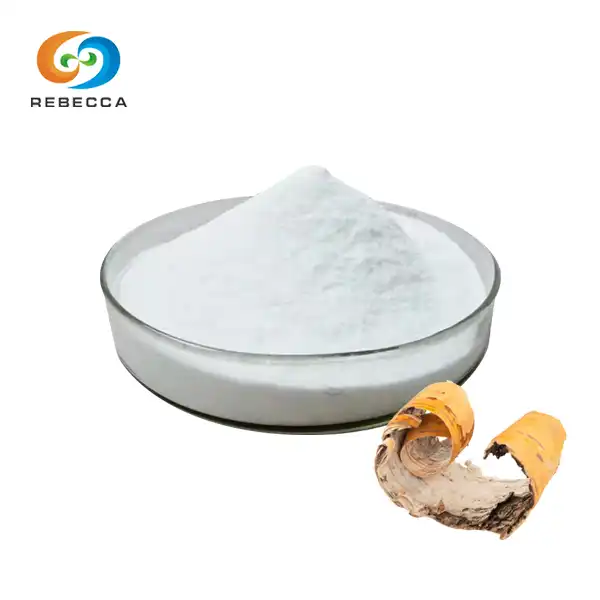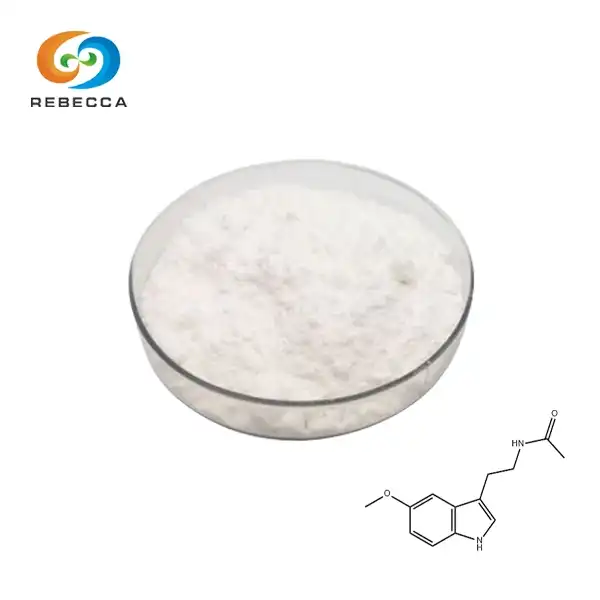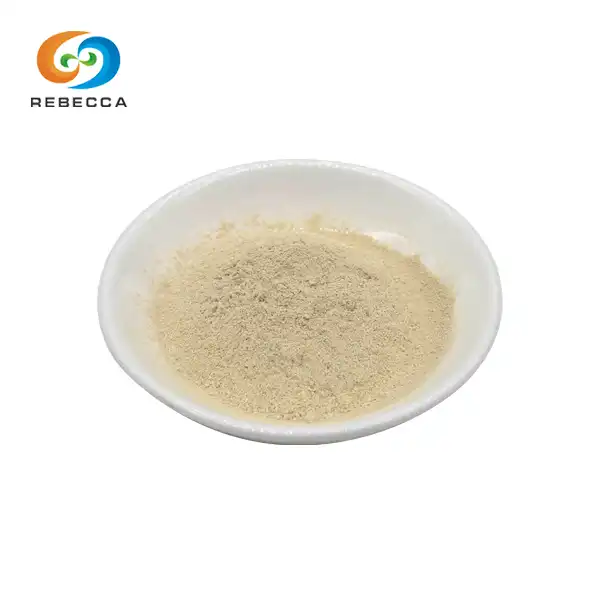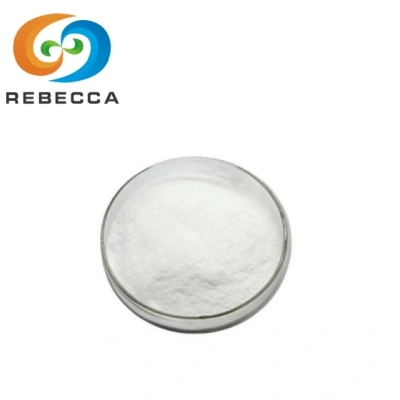Compare clinical evidence for quercetin VS pterostilbene anti-inflammatory effects
When it comes to natural compounds with powerful anti-inflammatory properties, quercetin and pterostilbene extract stand out as promising contenders. Both offer unique benefits in combating inflammation, but how do they stack up against each other? This comprehensive comparison delves into the clinical evidence supporting quercetin and pterostilbene benefits, focusing on their anti-inflammatory effects. By examining their mechanisms of action, potency, and bioavailability, we aim to provide valuable insights for those seeking to harness the potential of these remarkable compounds in various applications, from pharmaceutical research to functional food development.
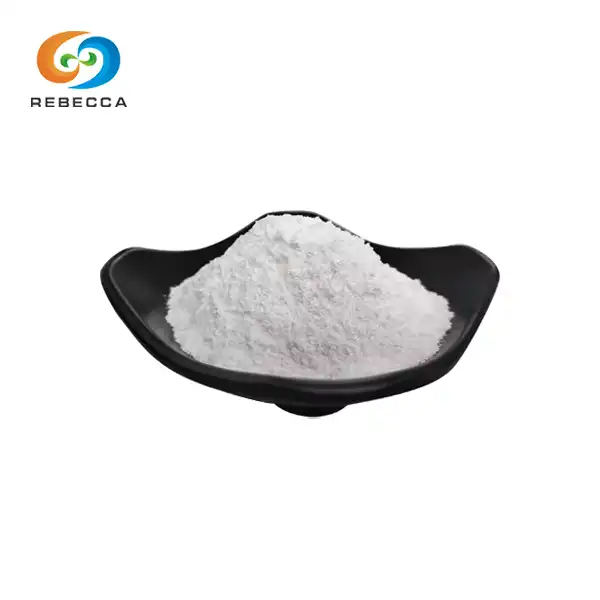
Pterostilbene Powder
Product Name: Pterostilbene Powder
CAS No.: 537-42-8
Specification: Pterostilbene , Min 99%, HPLC.
Test Method: HPLC
Latin Name:Vaccinium uliginosum L.
Shelf Life: 2 years
Minimum Order Quantity: 1 kg
Samples: Free samples available
Certifications: GMP, ISO, HACCP, KOSHER, and HALAL.
Payment: Various payment methods accepted.
Advantages: Manufactured in a 100,000-grade cleanroom, our products are additive-free, non-GMO
Inner Package: Double PE Bags; Net 5kg/Bag
Quercetin's proven anti-inflammatory pathways
Quercetin inhibits NF-κB signaling pathway
quercetin powder, a flavonoid found abundantly in fruits and vegetables, has garnered significant attention for its potent anti-inflammatory properties. One of the key mechanisms through which quercetin exerts its anti-inflammatory effects is by inhibiting the NF-κB signaling pathway. NF-κB plays a crucial role in regulating inflammatory responses, and its overactivation is associated with various inflammatory disorders.
Research has shown that quercetin effectively suppresses the activation of NF-κB, thereby reducing the production of pro-inflammatory mediators. This inhibition occurs through multiple mechanisms, including the prevention of IκB kinase activation and the suppression of NF-κB DNA-binding activity. By targeting this central inflammatory pathway, quercetin demonstrates its potential as a powerful anti-inflammatory agent.
Reduction of pro-inflammatory cytokines by quercetin
Another significant aspect of quercetin powder's anti-inflammatory action is its ability to reduce the production of pro-inflammatory cytokines. Cytokines are signaling molecules that play a crucial role in regulating inflammation. Quercetin has been shown to decrease the levels of several pro-inflammatory cytokines, including tumor necrosis factor-alpha (TNF-α), interleukin-6 (IL-6), and interleukin-1beta (IL-1β).
This reduction in pro-inflammatory cytokine production contributes to quercetin's overall anti-inflammatory effect, helping to mitigate excessive inflammatory responses in various tissues and organs. The ability to modulate cytokine production makes quercetin a valuable compound in addressing chronic inflammatory conditions.
Quercetin's antioxidant properties fight inflammation
Quercetin powder's anti-inflammatory effects are further enhanced by its potent antioxidant properties. Oxidative stress and inflammation are closely interconnected, with oxidative damage often triggering or exacerbating inflammatory responses. Quercetin acts as a powerful antioxidant, scavenging free radicals and reducing oxidative stress in cells and tissues.
By neutralizing reactive oxygen species (ROS) and enhancing the body's antioxidant defenses, quercetin helps break the cycle of oxidative stress and inflammation. This dual action as both an anti-inflammatory and antioxidant compound makes quercetin particularly effective in addressing complex inflammatory conditions where oxidative stress plays a significant role.
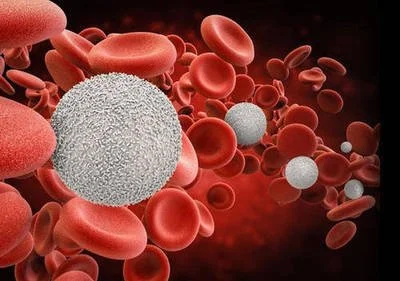
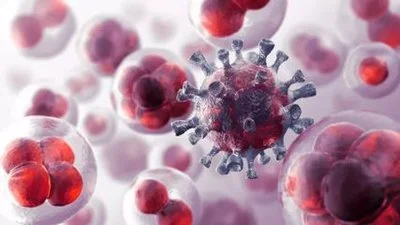
Pterostilbene: Emerging research on inflammation control
Pterostilbene's impact on COX-2 and iNOS expression
Pterostilbene extract, a naturally occurring analog of resveratrol, has emerged as a promising compound in the field of inflammation control. One of the key mechanisms through which pterostilbene exerts its anti-inflammatory effects is by modulating the expression of cyclooxygenase-2 (COX-2) and inducible nitric oxide synthase (iNOS). These enzymes play crucial roles in the inflammatory process and are often overexpressed in various inflammatory conditions.
Studies have demonstrated that pterostilbene effectively suppresses the expression of both COX-2 and iNOS, leading to a reduction in the production of prostaglandins and nitric oxide, respectively. This dual inhibition contributes significantly to pterostilbene's anti-inflammatory properties, making it a valuable compound for addressing inflammation at the molecular level.
Potential of pterostilbene in neuroinflammation
Emerging research has highlighted pterostilbene extract's potential in combating neuroinflammation, a key factor in various neurodegenerative disorders. Pterostilbene's ability to cross the blood-brain barrier more efficiently than its counterpart, resveratrol, makes it particularly interesting for neurological applications.
Studies have shown that pterostilbene can reduce the activation of microglia, the primary immune cells in the central nervous system. By modulating microglial activation, pterostilbene helps mitigate the release of pro-inflammatory mediators in the brain, potentially offering neuroprotective effects. This property of pterostilbene opens up exciting possibilities for its use in addressing neuroinflammatory conditions and supporting cognitive health.
Pterostilbene's role in modulating inflammatory markers
Beyond its effects on specific enzymes and cellular pathways, pterostilbene extract has demonstrated a broader impact on various inflammatory markers. Research has shown that pterostilbene can significantly reduce the levels of several key inflammatory mediators, including interleukin-6 (IL-6), tumor necrosis factor-alpha (TNF-α), and C-reactive protein (CRP).
This comprehensive modulation of inflammatory markers underscores pterostilbene's potential as a versatile anti-inflammatory agent. By targeting multiple aspects of the inflammatory response, pterostilbene offers a holistic approach to inflammation control, which could be particularly beneficial in addressing complex inflammatory disorders where multiple pathways are involved.

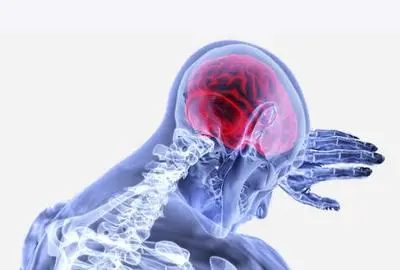
Head-to-head comparison: Which performs better?
Bioavailability: Pterostilbene vs. quercetin absorption rates
When comparing the efficacy of pterostilbene and quercetin, bioavailability plays a crucial role. Pterostilbene has shown superior bioavailability compared to quercetin, primarily due to its structural differences. The presence of two methoxy groups in pterostilbene, as opposed to the four hydroxyl groups in quercetin, contributes to its increased lipophilicity and enhanced cellular uptake.
Studies have demonstrated that pterostilbene exhibits approximately 80% bioavailability when taken orally, significantly higher than quercetin's bioavailability, which typically ranges from 3% to 17%. This enhanced absorption rate allows pterostilbene to achieve higher plasma concentrations and potentially exert more potent effects at lower doses compared to quercetin.
Potency: Comparing anti-inflammatory effects in vitro
In vitro studies comparing the anti-inflammatory potency of pterostilbene and quercetin have yielded interesting results. While both compounds demonstrate significant anti-inflammatory properties, their mechanisms and potency can vary depending on the specific inflammatory pathways and cellular models examined.
Pterostilbene has shown particularly strong effects in inhibiting NF-κB activation and reducing the expression of pro-inflammatory genes. In some studies, pterostilbene demonstrated greater potency than quercetin in suppressing inflammatory mediators like TNF-α and IL-6. However, quercetin's broader spectrum of anti-inflammatory actions, including its potent antioxidant properties, makes it highly effective in certain inflammatory models.
Clinical outcomes: Quercetin and pterostilbene in human trials
Human clinical trials provide valuable insights into the real-world efficacy of quercetin and pterostilbene. Quercetin has been more extensively studied in human trials, with numerous studies demonstrating its anti-inflammatory benefits in conditions such as cardiovascular disease, metabolic syndrome, and allergic responses.
Pterostilbene, while less studied in human trials, has shown promising results in areas such as cognitive function and cardiovascular health. Its superior bioavailability may contribute to its effectiveness at lower doses. However, more comprehensive human studies are needed to fully elucidate pterostilbene's clinical potential in various inflammatory conditions.
The comparison of quercetin and pterostilbene reveals two powerful compounds with significant anti-inflammatory potential. Quercetin offers a well-established track record, extensive research backing, and a broad spectrum of anti-inflammatory and antioxidant actions. Pterostilbene, with its superior bioavailability and potent effects on specific inflammatory pathways, emerges as a promising contender, particularly in areas like neuroinflammation. Both compounds demonstrate unique strengths, suggesting that their combined use or selective application based on specific health goals could offer optimal benefits in addressing inflammatory conditions.
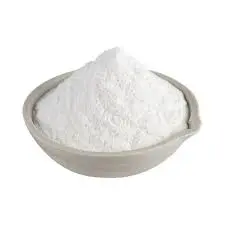
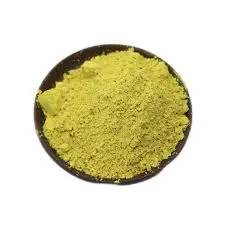
Where to Buy Quercetin and Pterostilbene Extracts?
For those seeking high-quality quercetin and pterostilbene extracts, Shaanxi Rebeccia offers premium natural quercetin powder and Pterostilbene Powder. Our state-of-the-art production facilities, equipped with advanced extraction and purification technology, ensure the highest quality standards. We adhere strictly to GMP and ISO guidelines, guaranteeing product safety and efficacy from raw material sourcing to final delivery.
Our natural quercetin powder, derived from Sophora japonica L., is available in 95% and 98% purity, while our pterostilbene powder boasts a minimum 99% purity. Both products are manufactured in a 100,000-grade cleanroom, ensuring additive-free and non-GMO formulations. We offer flexible order quantities, comprehensive certifications (GMP, ISO, HACCP, KOSHER, HALAL), and various payment options to meet diverse client needs.
Experience the quercetin and pterostilbene benefits firsthand with our premium extracts. For inquiries or to request samples, contact us at information@sxrebecca.com. Our team is ready to assist you in harnessing the power of these remarkable compounds for your pharmaceutical, health supplement, or functional food applications.
References
- Li Y, Yao J, Han C, et al. Quercetin, Inflammation and Immunity. Nutrients. 2016;8(3):167.
- McCormack D, McFadden D. A Review of Pterostilbene Antioxidant Activity and Disease Modification. Oxidative Medicine and Cellular Longevity. 2013;2013:575482.
- Ren K, Jiang T, Zhou HF, et al. Apigenin Retards Atherogenesis by Promoting ABCA1-Mediated Cholesterol Efflux and Suppressing Inflammation. Cellular Physiology and Biochemistry. 2018;47(5):2170-2184.
- Kapetanovic IM, Muzzio M, Huang Z, et al. Pharmacokinetics, oral bioavailability, and metabolic profile of resveratrol and its dimethylether analog, pterostilbene, in rats. Cancer Chemotherapy and Pharmacology. 2011;68(3):593-601.
- Patel KR, Scott E, Brown VA, et al. Clinical trials of resveratrol. Annals of the New York Academy of Sciences. 2011;1215:161-169.
- Riche DM, McEwen CL, Riche KD, et al. Analysis of safety from a human clinical trial with pterostilbene. Journal of Toxicology. 2013;2013:463595.
